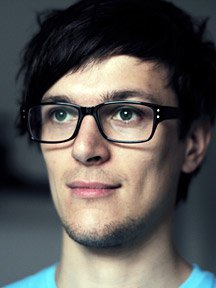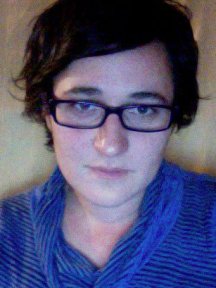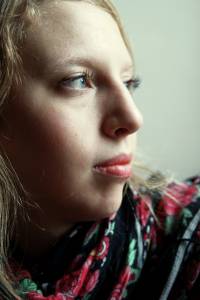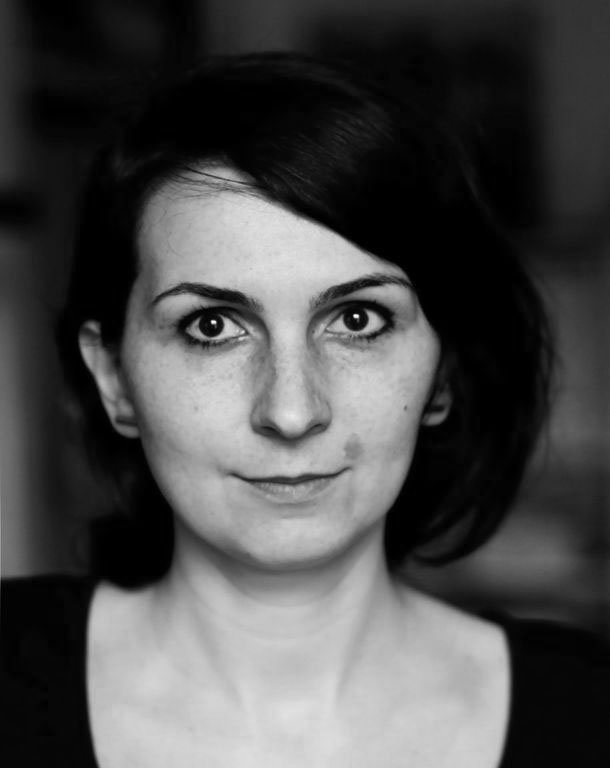Ambivalence as a creative method
What is the stance of the individual writers of the film, Gottland towards the film being labeled as a “documentary film”, the alternative form of distribution and towards their mutual production? We interviewed four out of the five writers of the film, Lukáš Kokeš (LK), Klára Tasovská (KT), Viera Čákanyová (VČ) and Rozálie Kohoutová (RK).
The individual films form – in content and style – a relatively compact unit. To what extent did the dramaturge contribute to the concept of the film?
LK: The dramaturge Jan Gogola, Jr., stood at the origin of Gottland from the very beginning. He is the author of the decisive concept, which he right off the bat named ”writing Gottland into the present.” The entire film collection wasn't just supposed to be an illustration or an adaptation of the book, but its film completion. Each of the directors sought inherent principles and methods of how to transform stories from literary works (many of them situated in history) into a film which takes place mostly more or less in the present.
In the whole series, I see many connecting moments as well as many divisive moments. One of the main terms, which Jan Gogola, Jr. often used, in relation to all of our stories, was “ambivalence“. The ambivalence of the heroes of each of the parts is reflected in the ambivalence of Gottland as a whole, in the ambivalence of formal and content-related methods, in the ambivalence affecting the viewer, in the ambivalence of the narration within each story. We consciously worked with it as a creative method.
KT: The fact that the stories, despite different processing, are quite similar, can be ascribed to mutual opinion and style.
RK: The preparation of the scripts took a long time and consisted of mutual discussions. It is possible that we tuned into the same wavelength.
VČ: It is difficult to maintain compactness within various subjects. I do not feel that it is a compact unit. Perhaps the impression is partially made by the commentary, which is present almost everywhere, but this is more of a coincidence. If I remember correctly, the original idea didn't work with it so extensively. A certain compactness is also evident in the mutual dark mood of the film, which stands in contrast to the original lightness of Szczygieł's text.
Viera, your film is defined in an animated form. Why did you choose animation?
VČ: This form allows one to talk about quite scary and pathetic things with a distance, using a specific “rough“ humor and custom animation techniques. My hero was an unknown author of second class adventure novels, a StB collaborator, a human chameleon, “a commoner“. I tried to reconstruct and understand his actions based on fingerprints, which he left behind – graphical, since he was a writer, StB records kept on his person and biological, i.e. his two living daughters. I wondered what remained after people and what these fragments added to today.
Do you perceive Gottland as a documentary film?
RK: No.
VČ: It is included in this category and therefore raises certain audience expectations. I do not quite understand these definitions.
LK: I understand the meaning of the label “documentary film“, but actually I am not that interested in it. I see Gottland simply as a film. A film shot by a certain method or series of methods. It really is a documentary, but at the same time it's not. In the same way as Gottland is an animated, experimental, played, found footage or photographic film.
KT: I perceive the term documentary film very broadly and I don't let it limit me in any way. I am glad that current documentary films are trying to grow out of their deep-rooted traditions and are becoming more and more open (in terms of topics and processing) towards real cinematography.
|
|
Lukáš Kokeš (1983) studied at the Department of Film Studies at the Faculty of Philosophy, Charles University in Prague and subsequently was accepted to the Department of Documentary Film at Prague's FAMU. In the film Gottland, he is the author of the story 86 400. |
|
|
Viera Čákanyová (1980) graduated from the Department of Scriptwriting at the Academy of Performing Arts in Bratislava. Since the year 2005, she is studying at the Department of Documentary Film at Prague's FAMU. In the film Gottland, she is the author of the story The Flying Horse (Letící kůň). |
|
|
Rozálie Kohoutová (1985) originaly studied Romani Studies at Charles University in Prague. In the year 2006, she was accepted to the Department of Documentary film at FAMU. In the film Gottland, she is the author of the story Stalin's place (Místo Stalina). |
|
|
Klára Tasovská (1980) studied Monument Art and New Media at the Academy of Fine Arts in Prague. Since the year 2006, she has been studying at the Department of Documentary Film at FAMU. In the film Gottland, she is the author of the story Zdeněk. |
This interview was published full-length in Czech in the Jihlava IDFF newspapers, dok.revue F05.
Translated by Christina Skorulská







